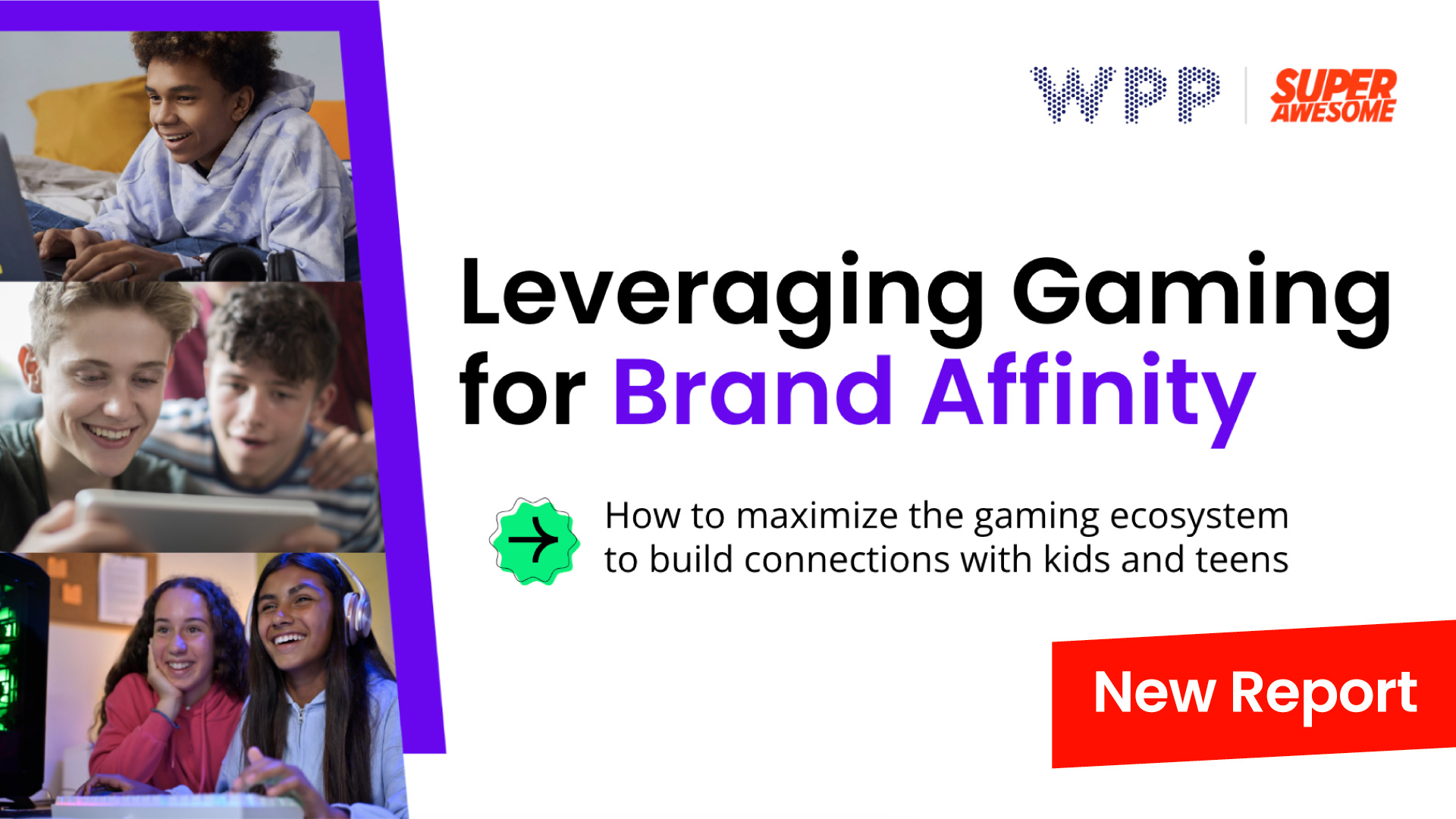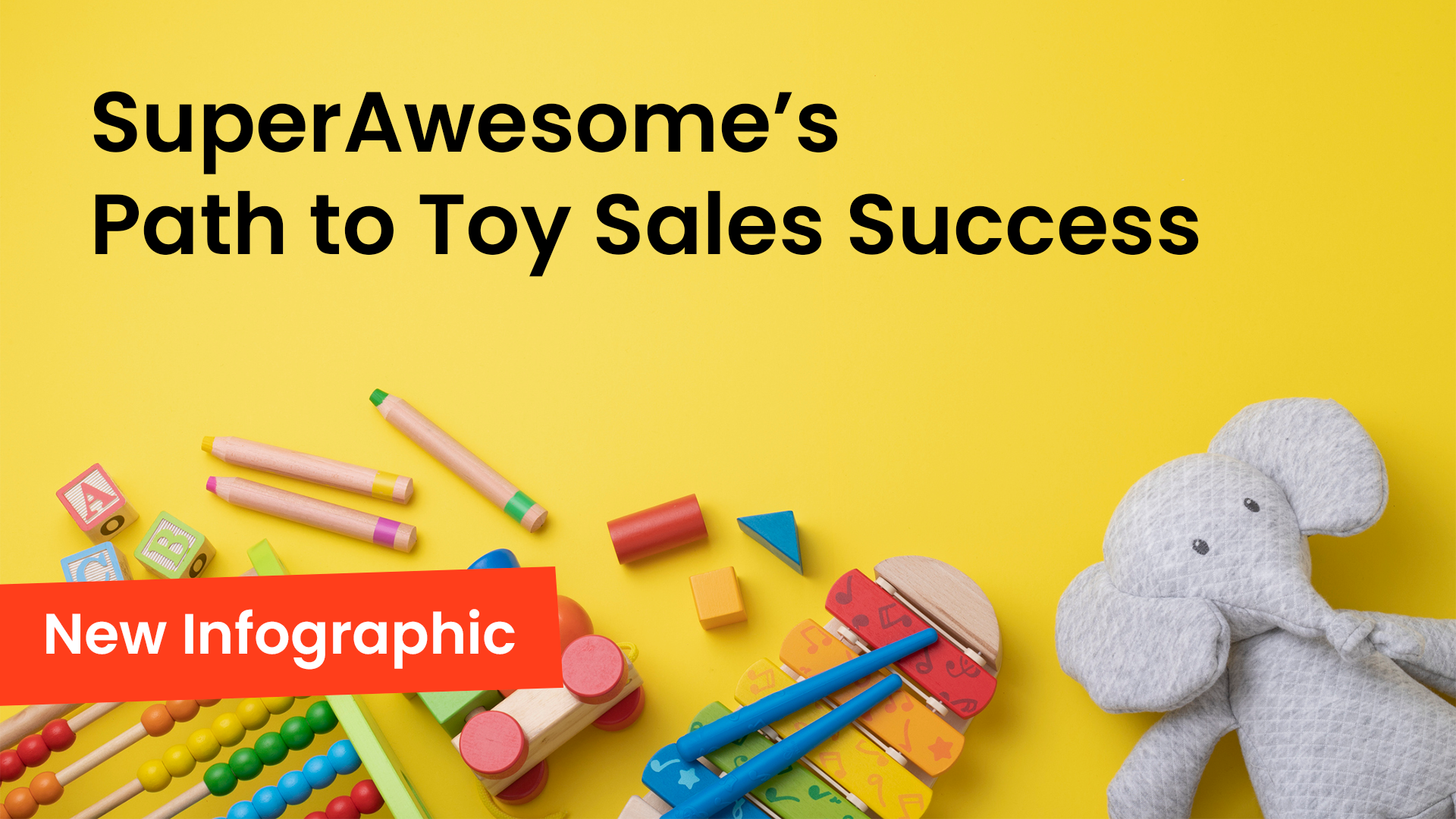Afton Thatcher is SuperAwesome’s new Head of Industry for Toys in the US.
Historically, brands invested heavily into linear TV ads to reach pre-schoolers – with great success. However, in this new, digital-first era, they’ve had to become more innovative as they bid to keep their brand relevant and visible in a fragmented landscape where attention is split across multiple platforms and touchpoints. Today’s pre-schoolers have access to and ownership of tech that has reshaped their interactions with the world around them and, in turn, the ways that brands interact with them, too.
We shouldn’t underestimate the influence pre-schoolers can have on family purchase decisions. Our research shows that 95% of parents acknowledge that pre-schoolers directly influence what they buy for them, while 85% note that they impact broader purchase decisions for the whole family.
This growing influence, increased personal device access, and the continued phenomenon of ‘screen time as family time’ means that brands that want to resonate with 3-6-year-olds and their families need a strategy to effectively navigate the hyper-fragmented landscape.

At SuperAwesome, we specialize in reaching youth audiences in a way that is effective, engaging, safe, and compliant. In this article, we’ll share three of the key ways we help brands to be successful when it comes to engaging pre-school audiences and their families:
1. Focus on Creating a Family Conversation
Cross-generational conversations often happen when families are relaxing and watching content together. Interestingly, when co-viewing content in this way, we know that kids tend to “hold the remote,” with more than half of US parents saying their child mostly chooses what they watch together. For toy and entertainment brands in particular, this highlights the need to appeal directly to pre-schoolers as equals to parents rather than as a bonus audience segment because scaled access to pre-schoolers also delivers engaged parents.
Showing up in the right places matters when it comes to being a part of family conversations. For example, 65% of pre-schoolers watch cartoons and kids’ shows with their parents on YouTube, while 45% watch influencer content with their parents. So, to assist with reaching families via CTV, we have carefully curated a vast and safe collection of the most popular content for pre-schoolers on Connected TV devices.
With this in mind, we recommend that most brands have a video media plan that includes animated, educational, and influencer content primarily viewed via CTV to help them participate in shared screen time. Being a part of these conversations can directly influence purchase decisions. Parents are 2.5 times more likely to buy products they see advertised while watching TV with their families.
2. Meet Your Audience Where They Are
With traditional TV viewership down 74% for under-16s, you need to find pre-schoolers where they are. Entertainment time is now split between streaming, YouTube, and other apps so your pre-school strategy needs to take a more thoughtfully curated approach that includes family influencer content, safely bought ads for YouTube, and games appropriate for their development.

Fragmentation even exists within a single platform. For example, we are often asked whether it’s necessary to include both YouTube and YouTube Kids in buys to reach 3-6-year-olds. Through our research on family preferences, our deep knowledge of the practicalities of safely buying audience-based YouTube ads, and our work with regionally exclusive partners like Moonbug, we’ve concluded that having data and access to insights about consumption on YouTube and YouTube Kids is the ideal fit:
“We’ve found that families are co-viewing our content on both YouTube and YouTube Kids. Some watch only on the YouTube Kids app while others watch on the general YouTube experience via tablets and streaming TVs. So what works best for having a strong engagement strategy is to have access to both platforms” says Dan’l Hewitt, Head of Global Business at Moonbug Entertainment.
Our ‘AwesomeAds for Social’ offering assists brands in effectively engaging families however they access the videos they love to watch. Our technology helps to drive effectiveness by identifying the most appealing content for a particular audience with much greater granularity than is typically employed with just age or gender.
We don’t rely on the insufficient (and often incorrect!) labels on YouTube videos for our targeting. Instead, we use AI and machine learning, plus the all-important human review of channels and videos, to ensure our partners’ YouTube investments are on-target, brand-safe, and developmentally appropriate for their target audience.
3. Match Content to Pre-schoolers’ Interests and Development
To keep pre-schoolers engaged, the content they consume must also resonate with their interests and align with their developmental milestones. One of our specialties is integrating popular characters and themes into content while supporting cognitive and emotional development. We combine our insights, regulatory expertise, and our design team’s creativity into everything we produce.
For example, we’ve found that giving pre-schoolers choices in their interactions with rich media helps to tap into a growing sense of independence and interest in making their own decisions. Units like 3D carousels and filmstrips put kids in the driver’s seat and allow young audiences to explore a brand or characters. This approach results in much higher engagement rates: we’ve seen engagement rates increase by more than 70% in campaigns where we have included a carousel in an AwesomeAds interstitial, for example. At the same time, our compliance experts ensure all ads meet age-appropriate design codes, promoting transparency and integrity in every interaction.
Minigames also create a ‘cool factor’ among all kids, and pre-schoolers are no different. When designing gamified brand experiences for 3-6-year-olds, we find that drawing, memory games, and tap-to-collect mechanisms have the right balance of engagement and stimulation for their developmental stage.
From creative design to the technical delivery of content and ads, our product design is centered on safety and compliance. All of our ads are built to meet our rigorous Advertising Standards. This protects young audiences and your brand and builds trust with parents, who are, on average, 70% more comfortable using platforms that they know adhere to the highest safety standards.
At SuperAwesome, we are committed to revolutionizing the way brands engage with pre-school audiences. By leveraging our advanced technology and expertise, we provide safe, engaging, and educational digital experiences that meet the high standards of parents and educators alike. Join us in shaping a safer digital future for our youngest audiences.






